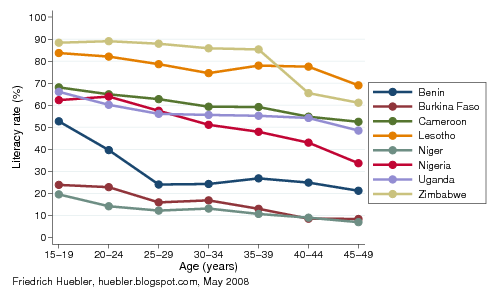It is hard to explain the vast significance of expanding the education opportunities for girls, especially in the developing world. Poverty, population, health, technology, etc. are all linked to the education of young people.
Some of the benefits of increasing educational opportunities for girls include increasing family income, later marriages, reduced fertility rates, reduced infant and mortality rates, better nourished and healthier children and families, greater opportunities and life choices for women. Many reports done by organizations like the World Bank show that limiting girl’s education can have drastic economic effects and can damage countries GDP exponentially. In some countries in the developing world up to 85% of the female population is being excluded from the job market. By excluding women from proper education and from the workplace, these developing countries suffer devastating effects. With that being said there has been many improvements over the past 50 years. In 1970, girls’ education rates in the developing world were as low as 38 %, but by 1992 they had risen to 68 %. There has been a great improvement in East Asia and South America but in some of the least developed parts of the world the secondary education rates are only 12%.This increase in education access for girls in the developing world is due to an increase in civil rights throughout the world. The developing world has seen an increase in women’s rights and access to higher education and therefore a more likely chance to obtain a place in the marketplace. A furthering of women’s civil rights in the developing world has been and always will be paired with the girls’ education in the developing world.
Here is a graph that shows that the generations being born now and the generations of children that are youths, teenagers, and young adults have a higher rate of literacy.

It is this committee’s objective to identify the problems at hand and find adequate solutions for the problems. These problems include potential factors for cultures in certain areas in the developing world that this committee needs to tackle in order to solve the problems. Some of these factors may include differences in certain cultures attitudes towards the education of women. These factors should be seen as major issues to deal with in some areas of the world and in certain countries where there has been major religious/cultural objections to the advancement of the education of girls. Even if many people in the international community can’t see the human rights aspect of the problem of taking away education opportunities from girls and young women, many can see the economic aspect of it.
Let’s say that maybe only 60% of the female population of an area is receiving a proper education, which means that a whole 40% of the female population is not getting their skills used. It just does not make any sense to take such a large proportion of the population and take them out of the labour pool. If every child, male or female, in the world was given a proper education then every skill set in the would be made available, meaning that every possible perspective would be looked at, problems solved, inventions made, and businesses started. But instead the international community is letting quite the opposite happen. A lack of a proper education leads to many difficulties in being a productive world citizen and supplying something that can be beneficial to the economy. The most common and most easily measurable skill that indicates level of education is literacy, as discussed above.
As of 2000 nearly 42% of the women in the Middle East and Northern Africa were illiterate, which is compared to only 22% of men being illiterate. These numbers have dramatically increased in recent years due to an effort of the international community. As of 2011 many countries in the Middle East like Iran are up to a 15-year and older literacy rate of 85% and Iraq is up to a 15 year old and older rate of 78% (by 15 year and older rate I mean that is the percentage of those above the age of 15 that are literate). The fact that countries like Iran and Iraq have made such huge strides shows hope for the literacy rate at large but we must look deeper at what that literacy rate means, and how much it really affects girls and female education in the Middle East in general. Although the majority of the population in these countries is now literate does not necessarily mean that they are educated, and it does not mean that they have a formal education that is going to allow them to be successful in the world.